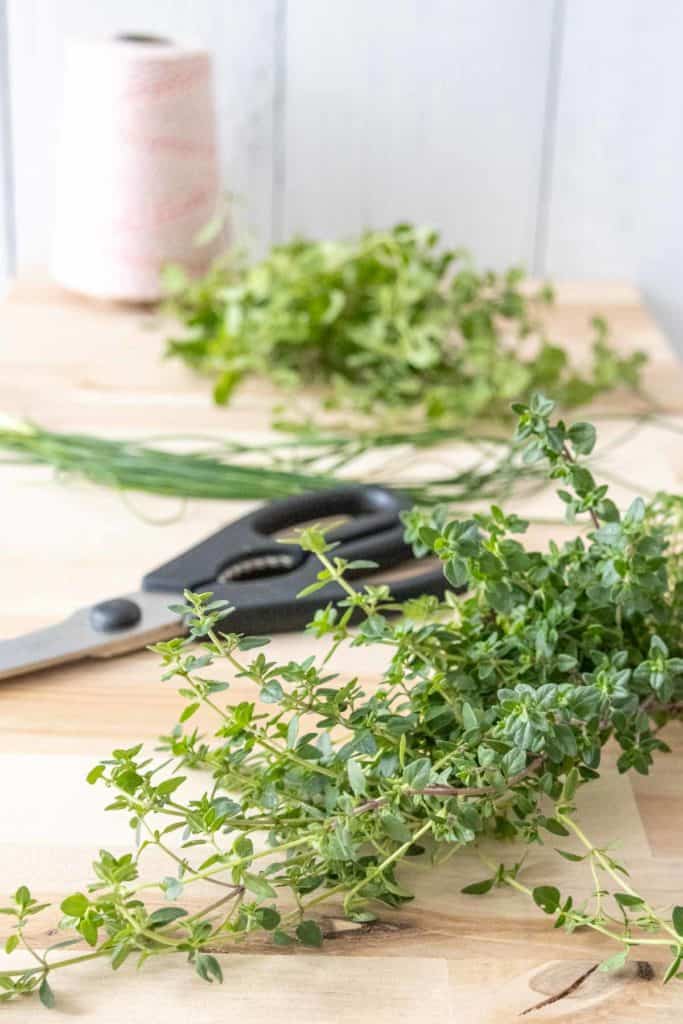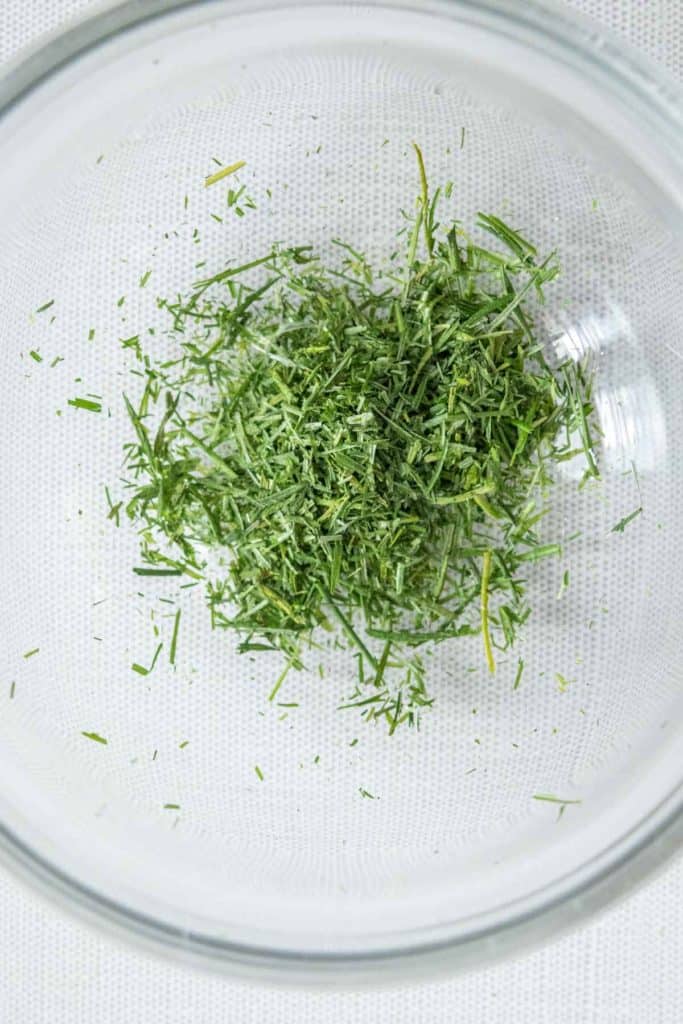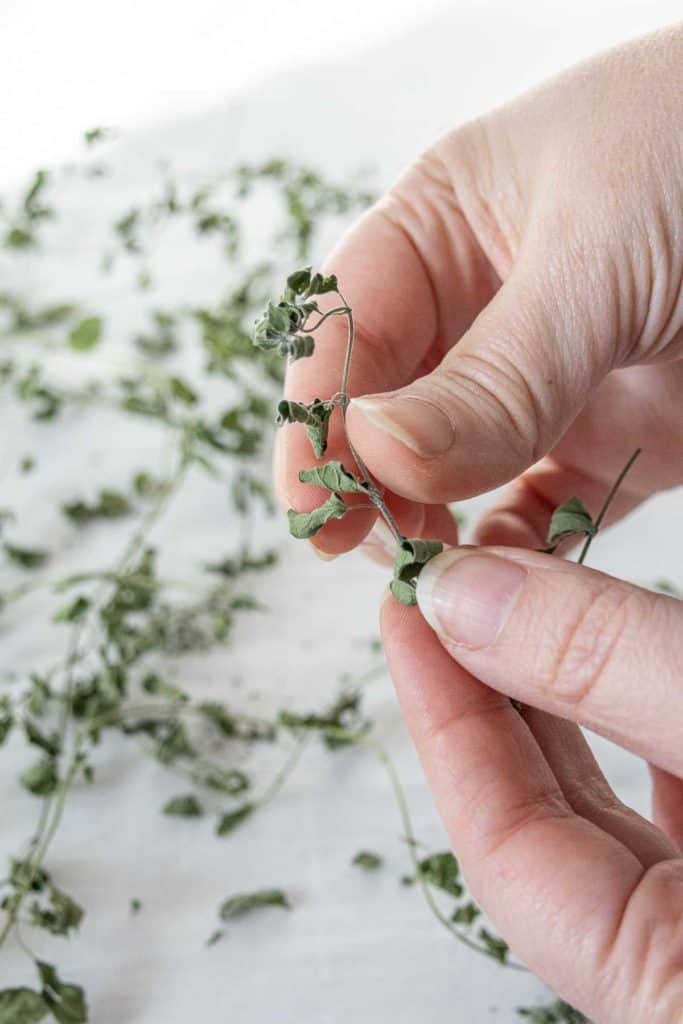This post contains affiliate links and may earn commissions on recommended products. As an Amazon Associate, I earn from qualifying purchases.
It’s easy to dry fresh rosemary and enjoy its fragrant flavor for months to come. Read on for instructions in the microwave, oven, dehydrator, or hang drying.

Drying fresh herbs is one of my favorite ways to keep flavor bursting in recipes all year long.
Many herbs have a short growing season, so it feels like there’s just not enough opportunity to use them! Fortunately, when you dry herbs you lock in that lovely flavor and make it easy to store in your spice cabinet.
There are four methods for how to dry rosemary, so anyone can do it! Use these methods to make the most of your rosemary plant or any excess rosemary you have on hand from holiday cooking.
Choose your favorite method and be ready to enjoy the woodsy, peppery flavor of rosemary!
How to harvest rosemary
Rosemary is an evergreen shrub, but where you live makes the difference in terms of whether it grows year-round, or as an annual plant. In colder climates it tends to die in the late fall or winter, needing to be replanted each year.
Rosemary can be harvested at any point, but it is best harvested in summer while there is tender new growth.
Harvest rosemary in the morning, before the heat of the day sets in. Make sure to cut off no more than 20-30 percent of the plant so it can grow back quickly.
If you grew your rosemary just for drying, you can remove more of the plant. Keep enough of the woody base so the plant can stay strong enough to last further into the cooler seasons.
Before drying, wash and pat dry. You want the stems and leaves to be as dry as possible before continuing.
If you have more rosemary than you want to dry, make a batch of rosemary simple syrup!
How to air dry rosemary
The easiest, but longest, way to dry rosemary is to air dry it.
Air drying rosemary requires a place in your kitchen for you to hang it — this can be a pantry, a hanging pot rack, or simply a string attached to the wall.

Divide your rosemary into bundles of a few stems each. Keeping the bundles smaller will help it dry more quickly.
Tie the stems together at the thicker end with a piece of kitchen twine. Leave one end of the twine long to hang it, or simply clip up with a clothespin or kitchen clip.
Hang in a well-ventilated area, away from direct sunlight.
Let the rosemary dry for 2-3 weeks. After the first week, check it every few days, turning if necessary, and store once the leaves are crisp and easily break apart.
How to dry rosemary in the microwave
Drying in the microwave is quick and easy. This method is perfect for drying just a small amount.
Cut the sprigs of rosemary into small sections, or remove the leaves from the stems.
Place the rosemary on a plate and cover with a paper towel.
Microwave for 40 seconds, then continue to microwave in 20 second bursts, checking after each burst for the dryness level.
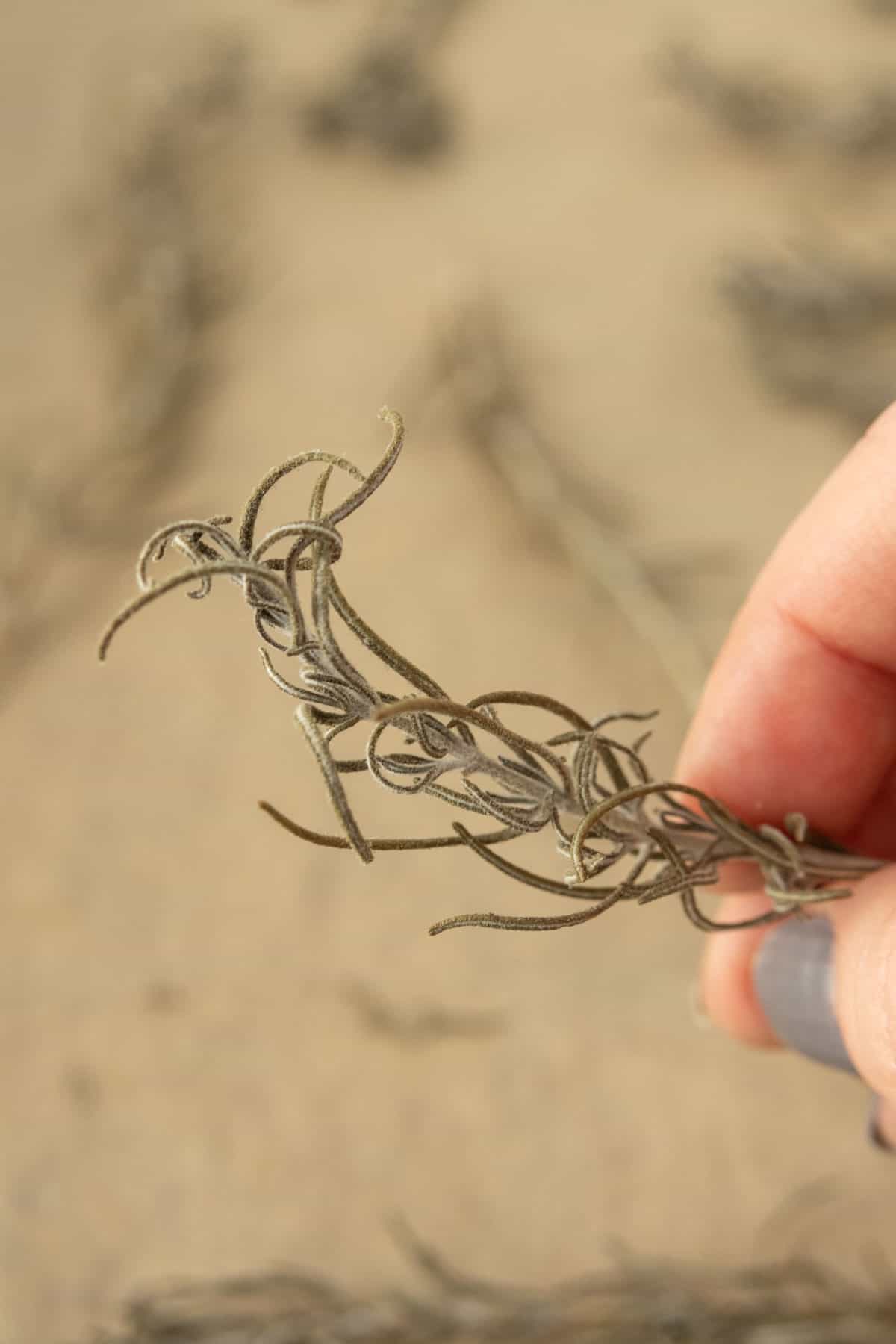
How to dry rosemary in a dehydrator
If you have a food dehydrator, it just might be the best way to dry rosemary! Dehydrators take longer but preserve the most amount of flavor in dried herbs.
To dry, lay rosemary sprigs in a single layer onto the trays.
Set to 95-115 degrees and dry for at least 4 hours. It can take as long as 24 hours to dry rosemary in a dehydrator, depending on your model and the amount of rosemary you are drying.
How to dry rosemary in the oven
My personal favorite method of drying rosemary is in the oven! This method locks in a lot of the flavor and also fills your kitchen with a wonderful herbal aroma.
To dry rosemary in the oven, arrange sprigs in a single layer on a parchment-lined baking sheet.
Turn your oven to the lowest temperature. This is usually between 170°F and 190°F.
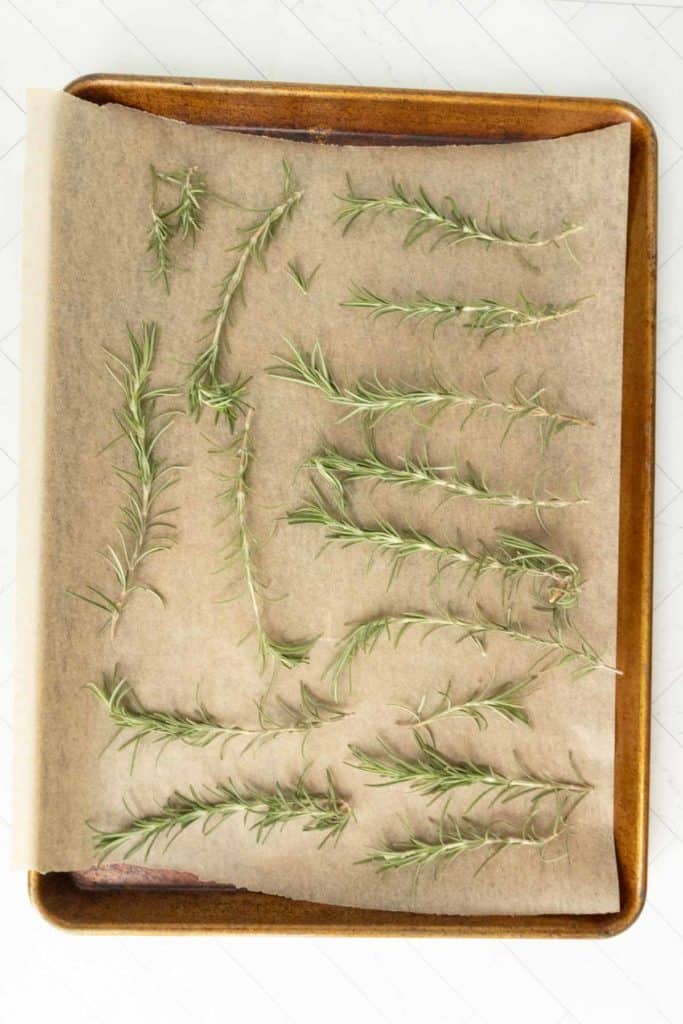

Place the baking sheet in the oven and bake for 2-4 hours, until the leaves are dry and brittle.
The amount of time will depend on the temperature of your oven, humidity levels in your house, and how much rosemary you are drying.
note
Leaving the oven door slightly ajar can help the leaves dry faster. However, if you have a gas oven, small children, or curious pets, leave the door closed!
Storing dried rosemary
Once your rosemary is dried, let it cool completely, then remove the leaves from the stems. They should be dry and quite brittle, so be careful that you don’t end up breaking them all over the place!
You can further break the rosemary into small pieces, grind it, or store the leaves whole until ready to use.
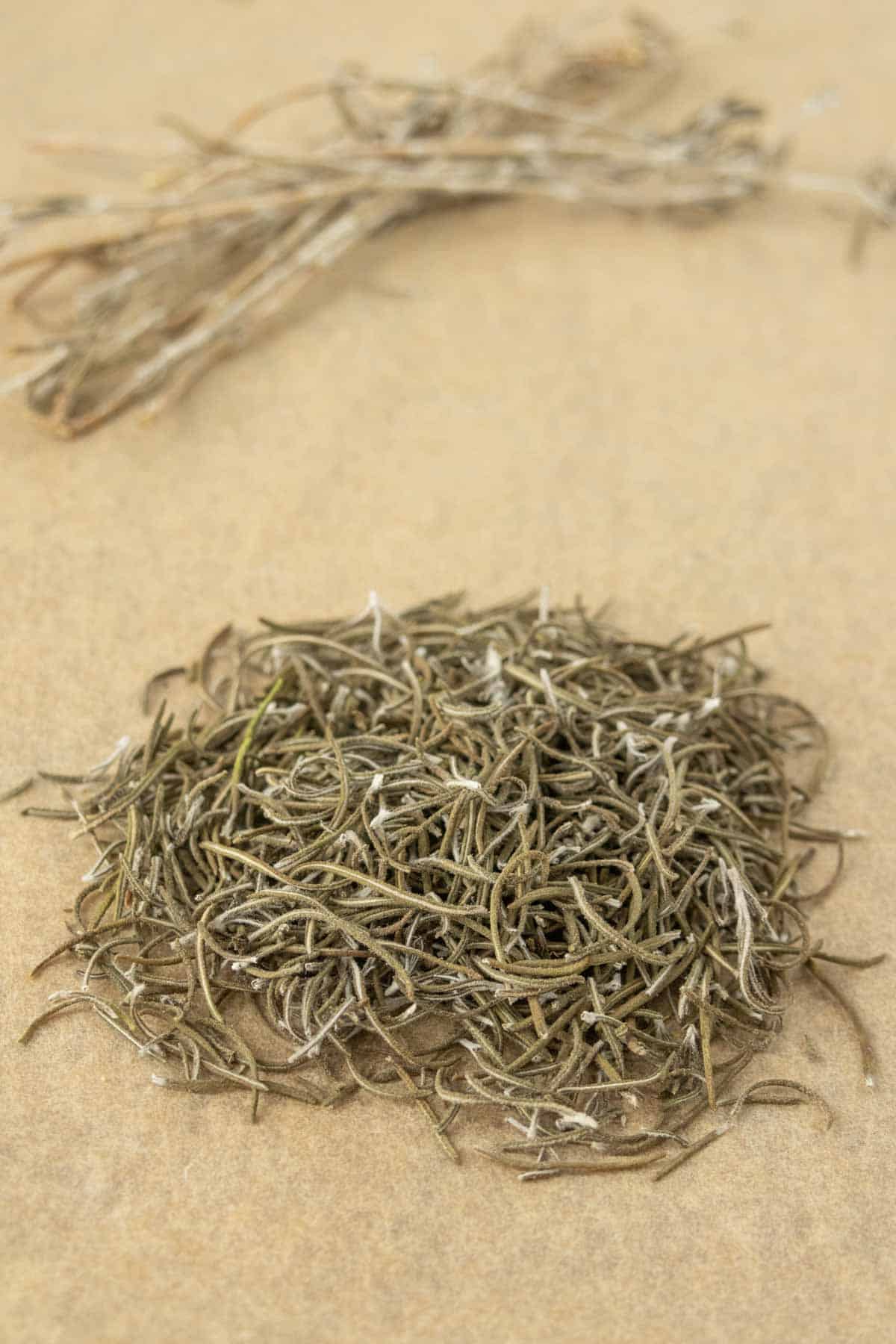
Leaving the leaves whole will keep the most flavor, but smaller pieces or ground makes it easier to use. It’s up to you how you’d like to store it!
Keep the rosemary in a spice jar or other container with a tight-fitting lid. A sealable plastic bag will also work.
Ways to use dried rosemary
Dried rosemary can be used almost anywhere fresh rosemary is called for.
Keep in mind that 1 teaspoon of dried rosemary equals about 1 tablespoon of fresh rosemary, so adjust any recipes accordingly.
Use dried rosemary in garlic and herb turkey tenderloin, slow cooker chicken and dumplings, or Instant Pot tortellini soup.
You can also use it in herb pizza dough or on top of no-knead focaccia.
Add it to homemade spaghetti sauce, or combine with dried oregano, dried basil, and other herbs to make your own Italian seasoning.
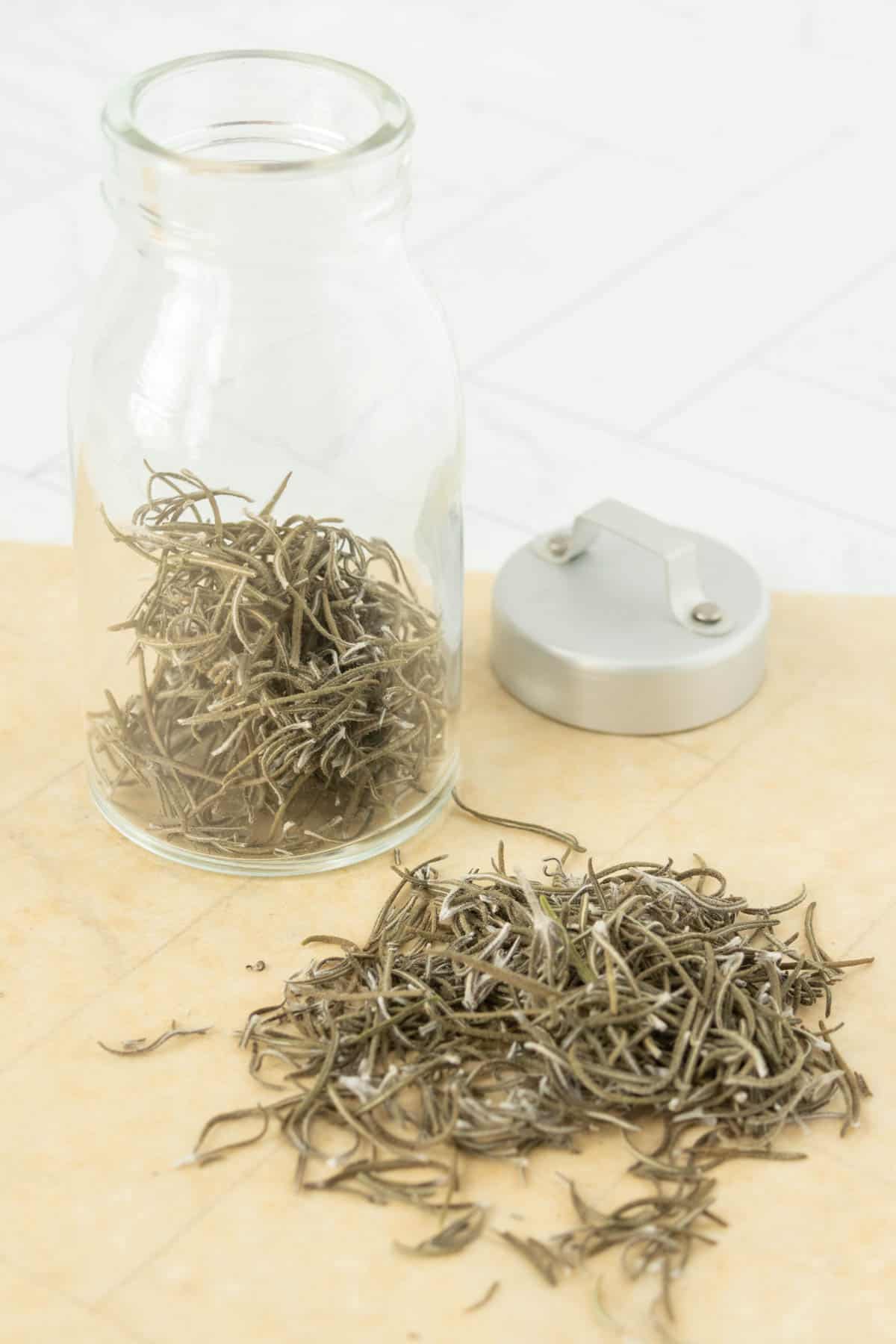
There’s so many ways to enjoy dried rosemary, so make up a batch today!
Love this recipe? Please leave a 5-star review below!
It means so much when you enjoy my recipes, so let me know how it goes and leave a comment if you have any questions.

How to Dry Rosemary
Ingredients
- 1 bunch fresh rosemary
Instructions
- Rinse rosemary gently, removing any dirt or browned leaves. Pat dry with a towel.
To hang dry
- Divide rosemary into 2-3 bundles. Cut a length of kitchen twine and tie a knot around one end of the rosemary. Tie a loop around the other end and hang in a cool, dry place.
- It will take 2-3 weeks for the rosemary to fully dry.
To oven dry
- Turn your oven as low as it can go. (For my oven this is 170°F.)
- Spread the rosemary in a single layer on a parchment-lined baking sheet. Place in the oven and leave the door ajar.
- Bake for 2-4 hours, checking every 30 minutes after the first hour for dryness. Pinching a leaf or two between your fingers to see if it crumbles. The rosemary should be fully dry within 4 hours.
Once dry
- When rosemary is dry, let cool, then strip the leaves and place in a glass jar. Label and store in a cool, dry place for up to 1 year. Once the rosemary loses its aroma, it's time for a new batch.
Notes
- Microwave and dehydrator methods are included within the main post.
- Do not leave your oven door ajar if you have a gas oven.
Nutrition
Nutrition information is provided as a courtesy and is an estimate based on online calculators. Any nutritional information found on Stetted should be used as a general guideline only.

About Megan
I learned how to cook by exploring seasonal ingredients, and you can too! Meal time shouldn’t be stressful or complicated, and with fresh ingredients and easy methods, I’m here to help you enjoy the time spent in the kitchen. Read more…



